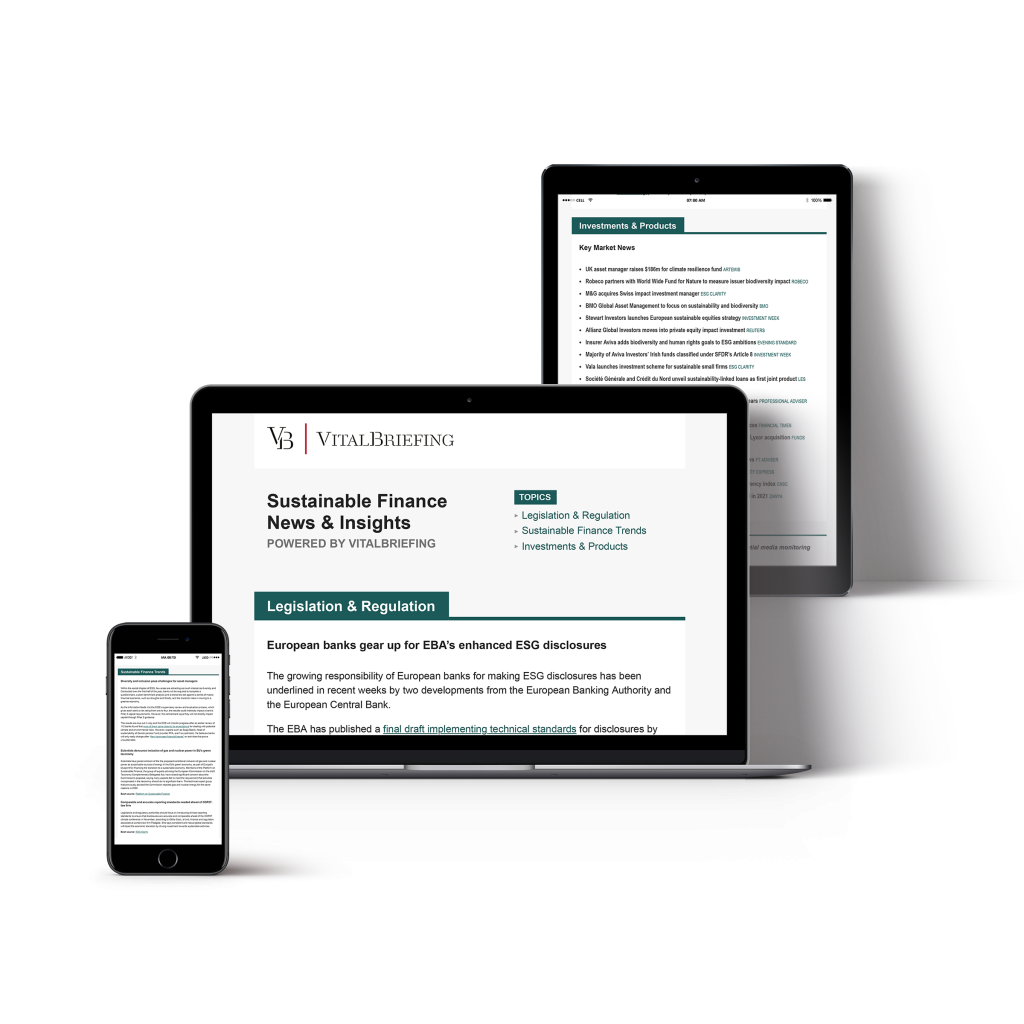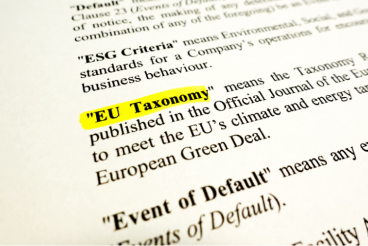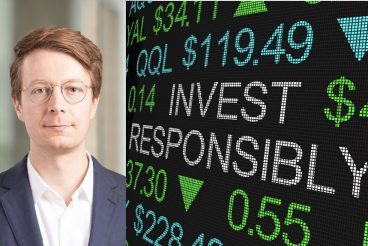This article is from VitalBriefing’s Sustainability Matters content series, in which we speak with experts across every facet of sustainability, ESG, sustainable finance, impact investing and more. If you or a colleague are interested in participating in the series, please get in touch by emailing eschrieberg@vitalbriefing.com.
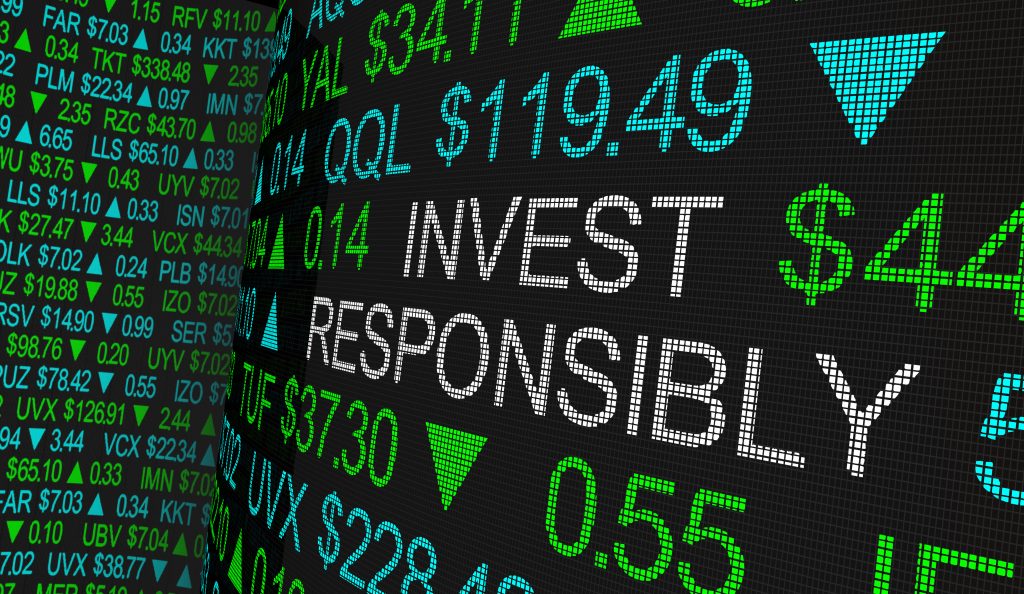
What is ‘Impact Investing’? We’ve all heard the term but what exactly does it mean? And who is it for? VitalBriefing spoke to Jamie Broderick, Board Member of the UK-based Impact Investing Institute about helping the people who want to use their investments to drive positive change in the world. The investors who would argue that capital can and should deliver not just for the planet, but for people too.
Are investors paying greater attention to social impact issues rather than just climate and environmental factors?
Absolutely. Although clearly much of the momentum in sustainable investing over the past few years has come from the climate crisis, more recently the Covid pandemic and movements such as Black Lives Matter have focused people’s attention on social issues, and in particular health outcomes and income inequality. Look at the $730 billion of sustainable debt issuance in 2020 – in previous years, green bonds made up the lion’s share of new issues, but last year nearly half were social and sustainability bonds and loans.
Even the global transition to net zero is being spoken of in terms of a ‘just transition’, one that takes into account the social implications of actions taken to reduce carbon emissions. The Impact Investing Institute was part of a group that successfully lobbied the UK government to issue its inaugural green bonds within a framework that captures the social implications of the green projects being funded.

Sustainable investment is often seen as going hand-in-hand with ESG. But shouldn’t governance be a factor in all types of investment, not just sustainable investment, and shouldn’t ESG be renamed simply as ES? Would you distinguish between sustainable and ES(G) investment, and if so, how?
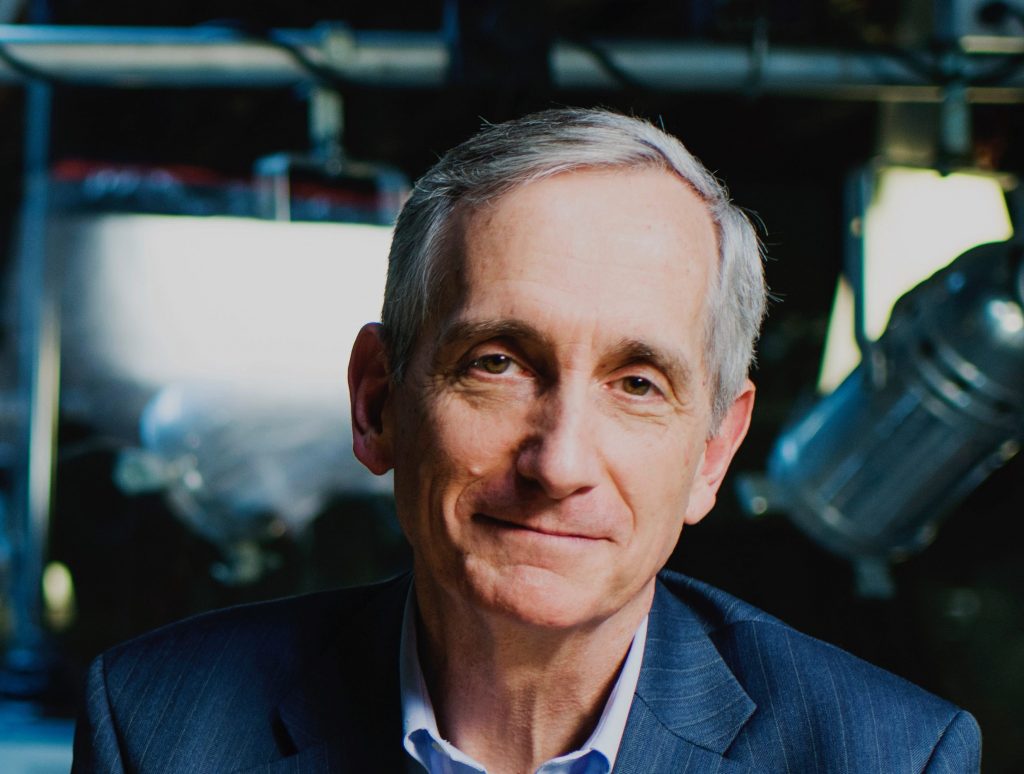
The nomenclature of sustainable and impact investing does need an overhaul, because it is evolving quickly, and the old labels are having trouble keeping up. Indeed, governance has always been a consideration in all types of investment, so it shouldn’t be singled out.
In the olden days – a few years ago – it was considered progressive to examine the environmental and social dimensions of an investment, alongside the company’s governance. But actually all three factors are now pretty standard among institutional asset managers, in an approach usually called ESG integration.
These days it is hard to take seriously an investment process that does not look closely at a company’s environmental and social exposure, in addition to the quality of its governance.
So rather than subtract the G from ESG, I believe we should stop using ESG as a label altogether, and expect all investing to consider environmental, social and governance factors. Every company has positives and negatives in all three categories, so the focus should be on how well companies are doing in those categories, enabling us to characterise companies according to how solid that impact balance sheet is.
What makes impact investing different from other types of socially responsible investment?
As Florian Heeb of the University of Zurich likes to say, “You need to cause impact rather than own it.” In impact investing, the investor’s capital is meant to have an impact on society or the environment. In much socially responsible investment, especially in the public markets, the listed companies have an impact, but the investor’s capital typically does not. That is the difference between company impact and investor impact, but many people conflate the two.
For example, a listed wind power developer may help reduce the amount of fossil fuel used, but an investor in that company is not having that impact. So there is company impact, but there may be no investor impact.
When you invest in listed companies, your capital doesn’t generally go to that company, it goes to the previous owner of the shares you are buying. Similarly, when you divest from a company, you don’t deprive that company of capital, you are selling your shares to another investor. The company’s capital position doesn’t change. As a result, much of the activity in impact investing occurs in the private markets, where capital tends to be new capital, not recycled capital, enabling additional impact activity that isn’t already happening.
How would an impact investor approach public markets?
As I say, when an investor puts money into shares that are listed on an exchange, that money doesn’t generally increase the company’s capital, and enable it to conduct additional projects, except in particular circumstances, such as IPOs and rights issues.
But does this mean that you can’t have impact in the public markets? Absolutely not! One of the most powerful ways to have impact with your capital is to use it to influence companies to improve their business practises, especially in terms of their impact on the environment, compensation policies, labour practices, and management of their supply chain.
Influencing occurs in meetings between institutional investors and companies they invest in, and through the way they vote on propositions put to shareholders. Individual investors can participate through their voting, but also by selecting asset managers that engage with companies in ways that are consistent with the investors’ values and preferences.
That engagement does work, as we have seen in recent examples of banks revising their policies on lending to the fossil fuel sector, oil and gas companies accelerating their transition toward renewables, and supermarket companies increasing the proportion of health foods on their shelves. Because of the size of listed markets, especially compared with that of private markets, a strategy of active engagement with companies can be as powerful as any other lever of impact investment.
There is a perception that individual impact investments are relatively small, and therefore less suitable for large investors. Is that true?
It is true that impact investing is an emerging rather than a mature sector. It has attracted less capital than conventional investing, which means there are fewer investment options, and the funds that exist are generally smaller. And because much impact investing is in private markets, there is less capital circulating, fewer investors, and the size of the projects available is smaller. That leads to a vicious circle: institutions don’t invest because the funds are small, and funds are small because institutions don’t invest.
This is why it has been helpful to have foundations and government provide anchor investments, to help these funds reach critical mass. But that doesn’t mean that institutions cannot participate. First, there are very large market segments, such as renewable energy, urban regeneration and social housing, where there is plenty of capacity to absorb institutional capital.
Secondly, there are lots of opportunities for institutions to participate, but where the size of the allocation is smaller than the institution is used to or prefers. That doesn’t mean that the institution cannot invest or that the investment is unsuitable, it just means that it may take more effort per dollar invested. It may require the institution to deviate from the way it normally processes new investment ideas, but that doesn’t seem too much to ask to help get capital into the areas where society needs it most.
How can retail investors access impact investments? Are they suitable for individual investors with relatively small portfolios?
If you accept that the highest-impact investments are in the private markets, it does limit the options for retail investors, for whom these generally would not be suitable. However, I would suggest four general areas for individual investors to consider.
Social banks lend their depositors’ money on to social enterprises, charities, community groups, environmental enterprises and other socially- and environmentally-minded borrowers. Examples are Charity Bank in the UK, UmweltBank in Germany, Crédit Coopératif in France and Triodos in the Netherlands. Generally accounts with these institutions will be covered by deposit insurance, so they are normally quite safe for investors. It might also be worth looking at credit unions, co-operative banks, building societies, mutual savings societies and other community-based financial institutions that may use deposits to assist social borrowers, but practices there are more variable and need to be researched carefully.
Defined contribution pension schemes are managed on behalf of individuals, and are often able to invest in private markets, although they are subject to constraints. Large DC schemes often come quite naturally to impact investments, while others might need to hear from their members that this is a priority. But you would be surprised at the impact a small group of committed and vocal DC scheme members can have on their pension providers.
The UK has a well-recognised ecosystem of listed closed-ended funds known as investment trusts. These are able to aggregate portfolios of private market investments in the social and environmental fields in a permanent capital structure listed on the London Stock Exchange. Investment trust shares can be bought and sold daily, like any stock, and so are freely available to retail investors. There are now investment options totalling £15 billion across 25 diversified funds, mostly in the areas of renewable energy and social housing.
Earlier we discussed shareholder engagement and its power to change the way companies do business. For most retail investors, this is realistically where their investment capital will have the greatest impact, mostly because they can apply engagement across their entire portfolio, not just in a specialist niche. If they invest directly, they can make their views known during shareholder meetings or votes. And if they invest through mutual funds, they can direct their capital to providers with a demonstrable commitment to pressuring investee companies to be more responsible toward society and the planet. This occurs through shareholder votes, or through asset managers’ regular meetings with company executives.
Do you need to stay on top of ESG and sustainable finance news? Check out the Sustainable Finance News & Insights Briefing, bringing you news summaries and market analysis on regulation, legislation, investment trends, products and more.
One subscriber says: “A must-read for anyone needing to keep abreast of all things ESG and sustainable finance: key headings & sections, straight to the point, great article summaries and links.”
More content from our Sustainability Matters series:
James Broderick is a board member of the Impact Investing Institute, an independent, non-profit UK organisation that aims to accelerate the growth and improve the effectiveness of the impact investing market. The Institute is supported by the UK’s Government Inclusive Economy Unit, the Foreign, Commonwealth & Development Office, the City of London Corporation, and a number of financial services organisations in the UK.
Jamie was head of UBS Wealth Management in the UK from 2013-2017. Jamie joined UBS after nineteen years at J.P. Morgan Asset Management, latterly as Chief Executive of its European operations.

